Understanding the Current Dip: Iron Ore at a Two-Month Low
Welcome back, traders and investors. Today, we’re going to dive deep into the fascinating world of iron ore, a fundamental commodity that serves as the backbone for global construction and industry. We’ve seen some significant price movements recently, specifically a drop that took iron ore to a two-month low. Why is this happening? What does it mean for the market? Let’s break it down together, like tackling a complex puzzle piece by piece.
As of our recent data analysis, the benchmark price for iron ore (specifically 62% Fe content fines, delivered to China, known as CFR China) has fallen to around $106 per tonne in June. This level marks a low point we haven’t seen in approximately two months. For anyone following commodity markets, such a significant dip warrants close examination. What forces are exerting this downward pressure?
Think of the iron ore market as a scale, balanced precariously between supply and demand. When demand weakens significantly relative to supply, prices tend to fall. When demand is strong and supply is constrained, prices rise. Right now, that scale is heavily tilted by one dominant factor: expectations surrounding demand, particularly from the world’s largest consumer, China.
We’ll explore this crucial relationship throughout our discussion. Understanding the interplay between global production, shipping dynamics, and, critically, China’s appetite for steelmaking raw materials is key to comprehending iron ore price movements. This isn’t just about charts and technical indicators; it’s about understanding the real-world forces that drive value in essential commodities.
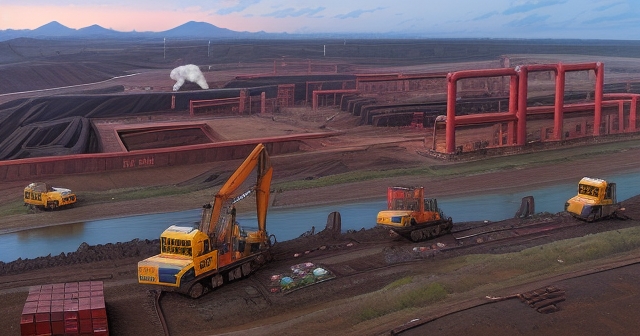
Three key factors affecting the iron ore market include:
- Current pricing trends and fluctuations.
- Demand from major consumer countries.
- Global production capacities and shipping logistics.
| Factor | Impact on Price |
|---|---|
| Supply and Demand | Direct correlation with price trends. |
| Global Economic Conditions | Influences demand forecasts. |
| Geopolitical Events | Can disrupt supply chains. |
A Look Back: From Peak Highs to Current Lows
To truly appreciate the current market situation, it helps to put it into historical context. The price of iron ore hasn’t always been hovering around the $100-$110 mark. Many of you will remember the incredible run-up in commodity prices a few years ago. Iron ore reached an all-time high price of a staggering $219.77 per tonne in July 2021.
That peak was fueled by a confluence of factors: robust global stimulus spending post-COVID, strong demand from China as its economy rebounded sharply, and some supply disruptions from major producers. It was a period of intense demand and constrained supply, sending prices soaring.
Now, look at where we are. The current price of around $106 is less than half of that peak. This isn’t just a minor correction; it represents a significant shift in market dynamics over the past few years. What has changed so drastically? While supply has largely recovered and stabilized from earlier disruptions, the demand side of the equation, particularly in China, has undergone a fundamental transformation.
Comparing today’s price to the 2021 high highlights the vulnerability of commodity prices to shifts in global economic conditions and, as we’ll see, specific sector-level issues within major consuming nations. It underscores the importance of analyzing not just price charts, but the underlying economic fundamentals.
Looking closer at recent performance, the decline hasn’t just been from the historical high. Since the beginning of 2024 alone, iron ore prices have decreased by approximately $29.25 per tonne, representing a 21.45% drop. This significant year-to-date decline confirms that the pressure on prices isn’t a fleeting event; it’s a persistent trend shaped by ongoing macroeconomic and sectoral challenges.
The Gravity of China: Why Its Property Sector Dictates Iron Ore’s Fate
If you want to understand iron ore prices, you absolutely must understand China. Why? Because China is, by far, the world’s largest consumer of iron ore, gobbling up around two-thirds of global seaborne supply. This consumption is primarily driven by its massive steel industry, which in turn feeds its vast construction and infrastructure projects.
And within China’s demand profile, one sector stands out as uniquely influential: the property sector. This isn’t just about building houses; it’s about apartments, commercial buildings, shopping malls, and the associated infrastructure like roads, bridges, and utilities that support urban development. All of these require enormous amounts of steel, and therefore, enormous amounts of iron ore.
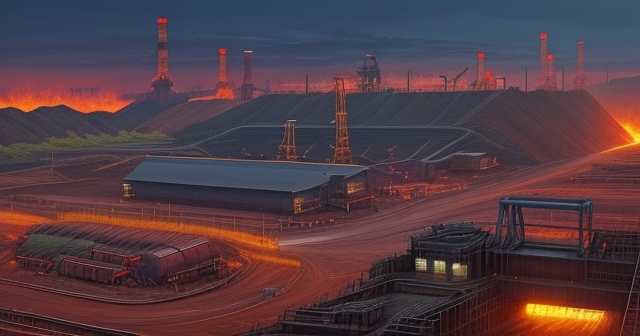
Consider this: when property development booms, steel mills run at high capacity, ordering vast quantities of iron ore. When property development slows or, worse, faces distress, steel demand plummets, and the need for iron ore dries up. It’s a direct, powerful link.
Right now, the primary driver behind the pessimistic outlook for iron ore prices is the pessimistic ferrous demand expectations from China. “Ferrous demand” refers to the demand for iron-containing metals, predominantly steel. And these pessimistic expectations are almost entirely rooted in the ongoing difficulties faced by the Chinese property sector.
Think of China’s property sector as the engine driving a large part of global iron ore consumption. If that engine sputters, the entire system slows down, and demand for its fuel (iron ore) falls. Understanding the specifics of *why* this engine is sputtering is crucial for any investor or trader trying to anticipate iron ore price movements.
We will delve deeper into the specific issues plaguing China’s property market in the next section. But the core concept is simple: the health of China’s property market is inextricably linked to the health of global iron ore demand and, consequently, its price.
Unpacking China’s Housing Woes: From Developer Distress to Plummeting Sales
Let’s zoom in on the situation within China’s property sector, because this is where the most significant bearish signals for iron ore originate. The term “distress” here isn’t an exaggeration; many developers are facing severe financial difficulties, struggling with high debt levels and falling revenues.
A stark example of this distress is the recent liquidation order for a developer like Dexin China. Such events send shivers through the market, highlighting the precarious financial state of many companies in the sector. When developers face liquidation or bankruptcy, construction projects halt, future development plans are shelved, and the demand for steel (and thus iron ore) evaporates.
But it’s not just about individual developers collapsing. The problem is systemic. We’ve seen a significant annual plunge in sales from the 100 largest Chinese constructors, reportedly down 34%. Imagine a company whose core business relies on selling a product, and suddenly their sales drop by a third. This level of decline indicates a deep slump in market activity and confidence.
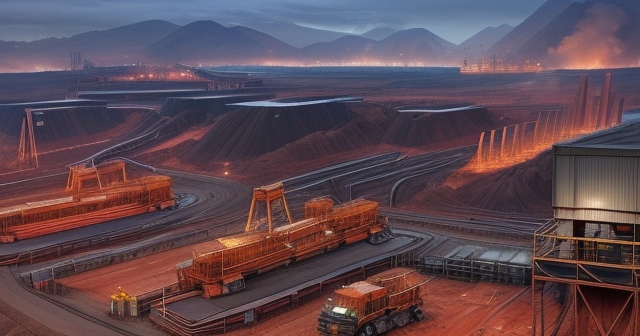
Why are sales plunging? It’s tied to weak consumer sentiment. Potential homebuyers in China are hesitant. They are concerned about the financial stability of developers (will the project actually be completed?), the overall economic outlook, and the future value of property. This weak consumer sentiment and plunging home demand create a vicious cycle: developers can’t sell homes, so they can’t generate revenue, which exacerbates their debt problems, further eroding consumer confidence.
Adding to the complexity is the issue of soaring housing inventory. In many cities, there is a large overhang of unsold apartments. Developers and local governments are sitting on a glut of completed or partially completed properties that the market isn’t absorbing. This high inventory level means there’s less incentive, and less need, to start *new* construction projects, even if financing were available. It’s like a store with too much stock – they won’t order more from their supplier until they sell what they have.
These combined factors – developer distress, crashing sales, weak consumer demand, and high inventory – paint a grim picture for the property sector. And because this sector is such a massive consumer of steel, its struggles directly translate into pessimistic expectations for iron ore demand. This fundamental weakness in the end-user market is the most powerful force pushing iron ore prices lower.
Beijing’s Balancing Act: Inventory Control vs. Developer Support
Given the critical state of the property sector and its impact on the economy (and commodities like iron ore), the Chinese government’s response is paramount. However, Beijing’s proposed measures have added another layer of complexity and, for some market participants, disappointment.
Recent policy signals suggest that Beijing is focusing heavily on tackling soaring housing inventory. This involves measures aimed at helping local governments or state-owned entities purchase unsold homes to convert them into affordable housing or rentals. The idea is to reduce the supply overhang, stabilize the market, and potentially provide some liquidity to developers (by buying their unsold stock).
While tackling inventory is a necessary step, it’s different from what some investors and market participants were hoping for. Many in the market were anticipating more direct, significant financial support for the distressed private property developers themselves – measures like large-scale bailouts, debt restructuring guarantees, or direct stimulus to boost new home buying.
The government’s current focus on inventory control, while pragmatic in addressing a structural issue, can be seen as conflicting with hopes for direct support for distressed property developers. Why is this a conflict? Because direct support might enable developers to complete unfinished projects and even start new, albeit scaled-back, ones, generating immediate, albeit smaller, demand for steel and iron ore. Focusing on inventory clear-out, while potentially stabilizing the market long-term, doesn’t necessarily translate into a rapid increase in *new construction starts* in the short term. It’s about selling existing stock, not necessarily building a lot more new stock right away.
This perceived lack of forceful, direct stimulus aimed at developers reinforces the market’s pessimistic view on near-term ferrous demand. It suggests that the government is prioritizing longer-term stability and risk containment over a quick fix or a return to the previous development-driven growth model. For the iron ore market, this policy stance validates the expectation of subdued demand for steel in construction for the foreseeable future, contributing to the downward pressure on prices.
Global Mines and Shipping Lanes: The Other Side of the Iron Ore Equation
While demand, particularly from China, is the primary story for recent price weakness, we can’t ignore the supply side. Iron ore is mined in various parts of the world, with a few major players dominating seaborne trade. The largest producers include countries like Australia and Brazil, alongside others such as India, Russia, Ukraine, and South Africa. China is also a major producer, but its domestic output is often lower grade and expensive, so it relies heavily on imports.
Major global miners like BHP and VALE (from Australia and Brazil respectively) are critical components of the supply equation. Their production volumes and guidance significantly influence the overall availability of iron ore on the global market. We recently saw updates from these giants. BHP’s Q3 output was reported to be up 3% year-over-year, and they maintained their full-year guidance. VALE’s Q1 output also saw a year-over-year increase, though their nickel production lagged. It’s worth noting that historical reports sometimes showed year-over-year production declines (like VALE’s Q3 -4% and BHP’s Q1 -3% in previous periods), highlighting that production isn’t always smooth sailing.
| Company | Current Status |
|---|---|
| BHP | Up 3% in Q3 year-over-year. |
| VALE | Year-over-year increase, nickel production lagged. |
These production updates are important because they give us a picture of the supply pipeline. Generally, recent reports suggest that major miners are maintaining or slightly increasing output, which means supply remains relatively robust. There haven’t been widespread, major disruptions that would significantly constrain supply and push prices up.
Trade flow data also confirms this. China’s iron ore imports rose by 7% in January-May compared to the same period last year. Furthermore, iron ore exports via Port Hedland in Australia (a major export hub) were up 4.8% in May from April. These figures indicate that despite the demand concerns, iron ore is still being mined, shipped, and delivered in substantial volumes.
This robust supply, coupled with the weakening demand outlook, creates a classic scenario of imbalance that pressures prices. If producers keep pumping out ore at current or slightly higher rates, but the main customer (China) isn’t buying as much or as eagerly, then prices must fall to clear the market. The supply side hasn’t provided a strong counter-narrative to the bearish demand story; if anything, stable or rising supply exacerbates the impact of weak demand.
Reading the Tea Leaves: Market Sentiment, Fundamentals, and Trading Signals
Financial markets, including commodity markets, are influenced by a complex interplay of fundamental factors (like supply and demand) and market sentiment (the collective mood and expectations of traders). For iron ore, we’ve clearly identified the bearish fundamental story: weak China demand driven by property sector distress, met with relatively stable supply.
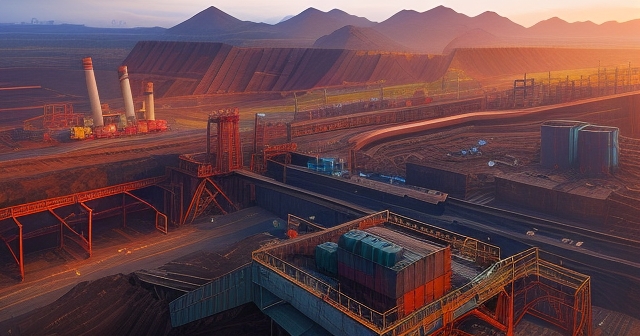
However, market sentiment can sometimes cause short-term price volatility that seems disconnected from the fundamentals. For instance, we saw instances recently where iron ore was down week-on-week due to “bad fundamentals,” only to post small rises on specific days. These temporary bounces often reflect minor shifts in sentiment, perhaps a rumor of potential stimulus, a slight uptick in daily steel transactions, or simply short-covering by traders who had bet on falling prices.
Brief moments of market confidence, such as those potentially sparked by positive developments (like brief hopes arising from Sino-US tariff negotiations, which can indirectly impact market mood), can sometimes lift related assets like stainless steel futures or spot prices, creating a temporary ripple effect. But as the underlying fundamentals of weak demand and high inventory reassert themselves, these effects weaken, transaction activity turns weak again, and prices tend to correct back downwards.
Understanding this dynamic is crucial for traders. While sentiment and news headlines can create trading opportunities in the short term, the persistent weakness in the fundamental picture – the demand-supply imbalance driven by China’s property woes – is the dominant force shaping the medium-term trend for iron ore prices. As a trader, it’s vital to distinguish between short-lived sentiment bounces and a genuine shift in the underlying fundamentals.
The current market analysis suggests that the fundamentals are indeed bearish. While forecasts might predict a future recovery, the path to that recovery is clouded by the significant structural challenges in China’s property sector and the policy approach being taken to address them. Market participants are constantly weighing the current reality of weak demand against any potential catalysts for future recovery, leading to the kind of choppy, downward-trending price action we’ve observed.
Beyond the Horizon: Analyzing Iron Ore Price Forecasts
Despite the current downward pressure and the challenges we’ve discussed, markets are always looking ahead. What does the future potentially hold for iron ore prices? While past performance is never a guarantee, market analysts provide forecasts based on their models and outlooks for the key influencing factors.
According to forecasts from sources like Trading Economics, there is an expectation of a modest recovery from the current lows. Their models project Iron Ore to trade at around $119.65 USD per tonne by the end of the current quarter. Looking further out, the forecast suggests a price of approximately $125.97 USD per tonne in 12 months.
What could drive this projected recovery? These forecasts likely factor in several possibilities:
- Potential stabilization in China’s property sector: Even without a strong rebound, a halt to the rapid deterioration could gradually restore some confidence and activity.
- Infrastructure spending: While property is struggling, other areas of steel consumption, such as infrastructure projects (transport, energy, utilities), could pick up.
- Policy impact: Beijing’s inventory clearing measures, if successful, could eventually pave the way for renewed building activity, although the timeline is uncertain.
- Global demand outside China: While China is dominant, demand from other regions could see gradual growth.
- Supply adjustments: Sustained low prices could eventually lead some higher-cost producers to cut output, tightening the market balance.
However, it’s crucial to remember that these are just forecasts, and they come with significant caveats. The realization of these prices depends heavily on the assumptions made about the future trajectory of the Chinese economy and its property market. If the property distress deepens, or if policy measures are less effective than hoped, these forecasts could prove optimistic.
As traders and investors, we use forecasts as guideposts, not guarantees. They represent a plausible scenario based on current information, but we must remain adaptable and constantly assess whether the actual market developments are aligning with those expectations. The path to $120 or $125 is likely to be bumpy, and heavily dependent on signals emerging from China.
Iron Ore to Steel: Understanding the Core Application and Its Demand Drivers
Let’s take a step back and remember what iron ore is actually used for. Its primary purpose, accounting for roughly 98% of demand, is as the essential raw material for making steel. Steel is then the fundamental building block for countless applications around the world. Think about it – where do you see steel?
You see it in the skeletons of skyscrapers and office buildings. You see it in residential homes, not just in the structure but in appliances, pipes, and fixtures. You see it in the bridges that span rivers, the tunnels that bore through mountains, and the railways and highways that connect cities. Steel is vital for manufacturing everything from cars and ships to machinery and household goods.
So, when we talk about demand for iron ore, we are fundamentally talking about demand for steel. And demand for steel is a direct reflection of economic activity, particularly in sectors that involve significant construction, manufacturing, and infrastructure development.
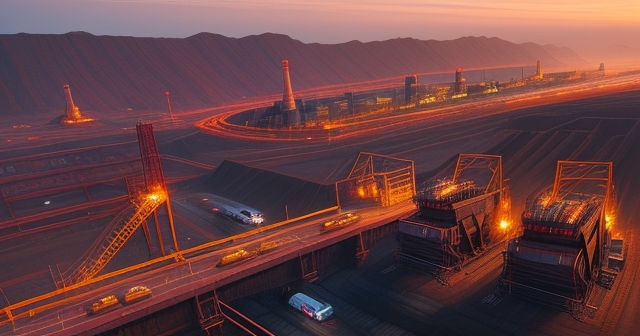
In a developing economy like China, where urbanization and industrialization have been rapid over the past few decades, the demand for steel (and thus iron ore) has been enormous. Building cities from the ground up requires vast quantities of this material. This is why China’s growth trajectory and investment patterns have been so profoundly influential on the global iron ore market.
When the property sector, which is a major consumer of steel, slows down as dramatically as it has in China, the ripple effect on steel demand is immediate and significant. Steel mills face reduced orders, they cut production, and consequently, their need for iron ore decreases. This direct link is why the troubles in China’s housing market have such an outsized impact on global iron ore prices.
Beyond property, infrastructure spending also drives steel demand. Government investments in roads, railways, power grids, and other public works projects consume large amounts of steel. Manufacturing, particularly heavy industries like automotive and machinery production, also contributes. While these sectors provide some demand, in China’s case, property has historically been the single largest and most volatile driver of steel consumption.
Understanding this chain – from iron ore to steel to end-use applications like construction and manufacturing – helps us appreciate why shifts in these key economic sectors have such a powerful impact on the price of the raw material.
Navigating the Landscape: Major Producers and Price Benchmarks
Understanding the market also involves knowing who the key players are and how the price is actually measured. As mentioned earlier, the major iron ore producing countries are concentrated in a few key regions. China is the largest producer globally, but much of its ore is lower quality and consumed domestically. For the seaborne market, the giants are Australia and Brazil, home to companies like BHP, Rio Tinto, and VALE. Other significant producers contributing to global supply include India, Russia, Ukraine, and South Africa.
The price we typically refer to is a benchmark price. The most commonly cited benchmark is for Iron Ore Fines with 62% iron content, delivered to China (CFR China). This price is often quoted for delivery at major Chinese ports like Tianjin. Why 62% Fe? This is a widely traded standard grade. Why CFR China? Because China is the largest buyer, and CFR (Cost and Freight) means the price includes the cost of the ore and the freight to get it to the Chinese port, which is a common way trades are done.
This benchmark price is influenced by several factors:
- The physical cost of mining and transporting the ore: This includes labor, energy, equipment, and shipping costs.
- Supply disruptions: Weather events (like cyclones in Australia or heavy rains in Brazil), accidents, or operational issues at major mines can temporarily restrict supply and push prices up.
- Demand strength: As we’ve seen, the appetite from steel mills, driven by end-use sectors, is crucial.
- Market sentiment and speculation: Traders buying and selling based on expectations can amplify price movements.
- Exchange rates: Since iron ore is priced in USD, fluctuations in the USD exchange rate can also play a role.
It’s also worth noting the role of different qualities of iron ore. While 62% Fe is standard, higher grades (like 65% Fe or 65.5% Fe) typically command a premium, while lower grades trade at a discount. The price spread between different grades can fluctuate based on steel mill profitability and environmental regulations (higher grade ore often produces less pollution). The mention of Canada adding high-purity iron ore to its critical raw minerals list highlights the increasing strategic importance being placed on specific types of ore for certain industrial processes beyond traditional steelmaking, though the vast majority of demand remains for standard grades.
Potential Pitfalls and Pathways: What Could Move Iron Ore Prices Next?
Looking ahead, what are the key factors that could potentially shift iron ore prices from their current trajectory? We’ve established that China’s demand is paramount, so developments there will be the primary drivers. However, other factors could also play a role.
On the demand side, the key questions are:
- Will China’s property sector find a floor? Will government measures or a gradual return of buyer confidence lead to a stabilization, or even a modest recovery, in home sales and new construction starts? This is the biggest wildcard.
- Will infrastructure spending increase significantly? Beijing could ramp up investment in large-scale infrastructure projects to offset weakness in property, boosting steel demand in that channel.
- How strong is global demand outside of China? A stronger-than-expected economic recovery in Europe, the US, or other developing economies could provide some support for steel demand, though unlikely to fully compensate for weakness in China.
On the supply side, the key questions are:
- Will major miners maintain or increase production? If demand remains weak and prices stay low, will high-cost producers be forced to cut production? Major miners like BHP and VALE have shown resilience, but sustained low prices test profitability.
- Are there risks of unexpected supply disruptions? Major weather events, accidents, or geopolitical issues in key producing regions could temporarily constrain supply.
Beyond these core supply and demand factors, broader macroeconomic trends and policy decisions can also influence prices:
- Global economic growth: A stronger global economy generally supports commodity demand. A global recession would further depress demand.
- Monetary policy: Interest rates and liquidity conditions influence investment and construction activity worldwide.
- Government policies in China: Any pivot towards more aggressive stimulus, particularly targeting property or infrastructure, would be a major bullish signal. Conversely, continued focus on de-risking and structural adjustment would maintain pressure.
- Environmental regulations: Policies impacting steel production (e.g., emissions controls in China) can affect demand for certain grades of ore or influence overall steel output.
For instance, the mention of “bad fundamentals” driving prices lower recently encapsulates the current situation. The market is predominantly reacting to the weak demand outlook from China. Any significant upward price movement would likely require a credible signal that China’s steel demand, particularly from the crucial property sector, is poised for a material improvement.
Applying Knowledge: How Fundamental Analysis Informs Your Trading Strategy
So, we’ve analyzed the data, discussed the key drivers, and looked at the forecasts. As traders, how do we use this fundamental analysis? While technical analysis (chart patterns, indicators) helps identify entry and exit points, fundamental analysis tells us *why* the market is moving and helps us form a directional bias for the medium to long term.
Understanding that China’s property sector distress is the primary weight on iron ore prices gives you a fundamental bearish bias, or at least a cautious stance. This knowledge suggests that rallies based purely on technical factors or minor news might be temporary and subject to reversal unless supported by improving fundamentals from China.
For traders considering positions in iron ore or related assets (like steel futures or shares of mining companies), this analysis highlights key indicators to watch:
- China’s property sales data: Monthly reports on sales volumes from major developers or cities are critical. Are they stabilizing or falling further?
- New construction starts data: This is a direct indicator of future steel demand. Is the rate of new projects picking up or declining?
- Government policy announcements: Any new measures targeting the property sector, infrastructure spending, or stimulus will be closely watched.
- Steel mill profitability and inventory: If mills are struggling or have high inventories of finished steel, they will reduce iron ore purchases.
- Major miners’ production reports and guidance: Are they expanding or contracting supply?
- Port data (like Port Hedland exports and China imports): Tracking physical flows provides insights into supply and demand activity.
By monitoring these fundamental data points, you can assess whether the underlying conditions are changing and if the market narrative is shifting. For example, a sustained increase in China’s home sales coupled with new policy support could signal a potential bottoming process for iron ore demand, challenging the bearish outlook and potentially supporting higher prices.
Conversely, if sales continue to plunge and developer distress worsens despite policy efforts, it would reinforce the bearish view and suggest that price pressure could persist. Using this fundamental lens helps you interpret technical signals within the broader market context, potentially avoiding trades that go against powerful underlying trends.
For instance, if technical indicators flash a “buy” signal during a period of consistently bad news from China’s property sector, your fundamental analysis provides a crucial filter, suggesting caution or confirmation from other factors before taking a bullish position.
If you’re exploring different financial instruments and markets to trade, understanding the fundamentals of commodities like iron ore is invaluable, even if you primarily focus on other assets. The forces driving commodity prices are often linked to global macroeconomic trends that also influence currencies, equities, and other markets.
If you’re exploring different financial instruments and markets to trade, understanding the fundamentals of commodities like iron ore is invaluable, even if you primarily focus on other assets. The forces driving commodity prices are often linked to global macroeconomic trends that also influence currencies, equities, and other markets. If you’re considering beginning your trading journey or expanding into various markets including CFD products, knowing where to access these instruments is important. Moneta Markets is a platform worth considering. Based in Australia, it offers a wide range of financial instruments, including CFD products that allow you to trade on the price movements of commodities like iron ore, alongside traditional currency pairs and other assets. It serves both novice and experienced traders with its offerings.
Ultimately, successful trading often involves combining multiple forms of analysis. Fundamental analysis provides the “why,” technical analysis provides the “when,” and risk management provides the “how much.” By incorporating the fundamental insights we’ve discussed today, you can become a more informed and potentially more successful trader in the complex world of commodities.
iron ore price dailyFAQ
Q:What is the current price of iron ore?
A:The current price for iron ore is around $106 per tonne.
Q:Why are iron ore prices declining?
A:Prices are declining due to weak demand expectations from China, primarily influenced by issues in the property sector.
Q:What role does China’s property sector play in iron ore demand?
A:China’s property sector is a major consumer of steel, which directly links its performance to the demand for iron ore.
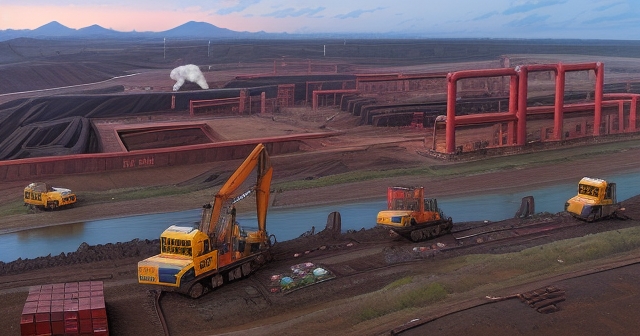
留言